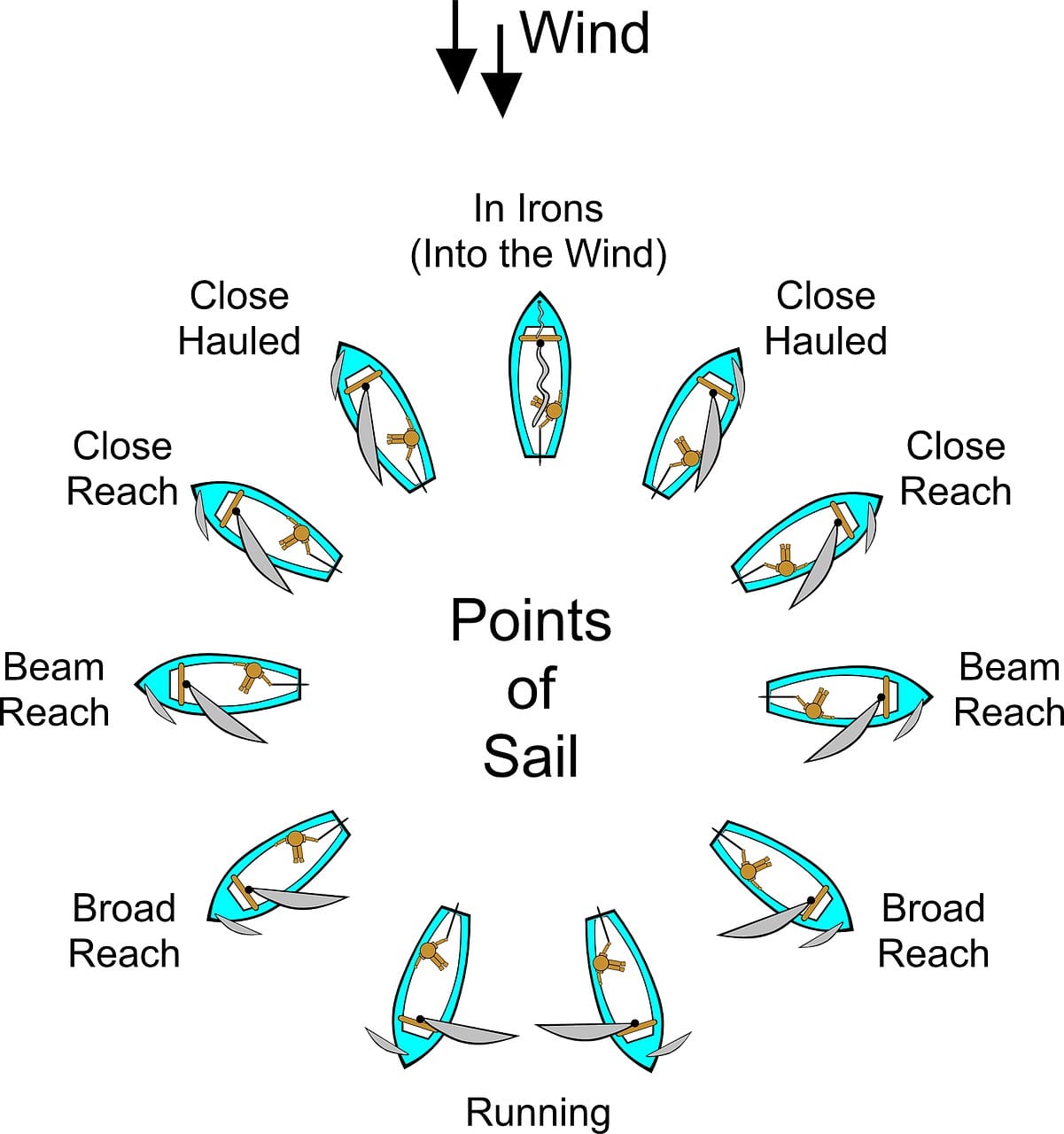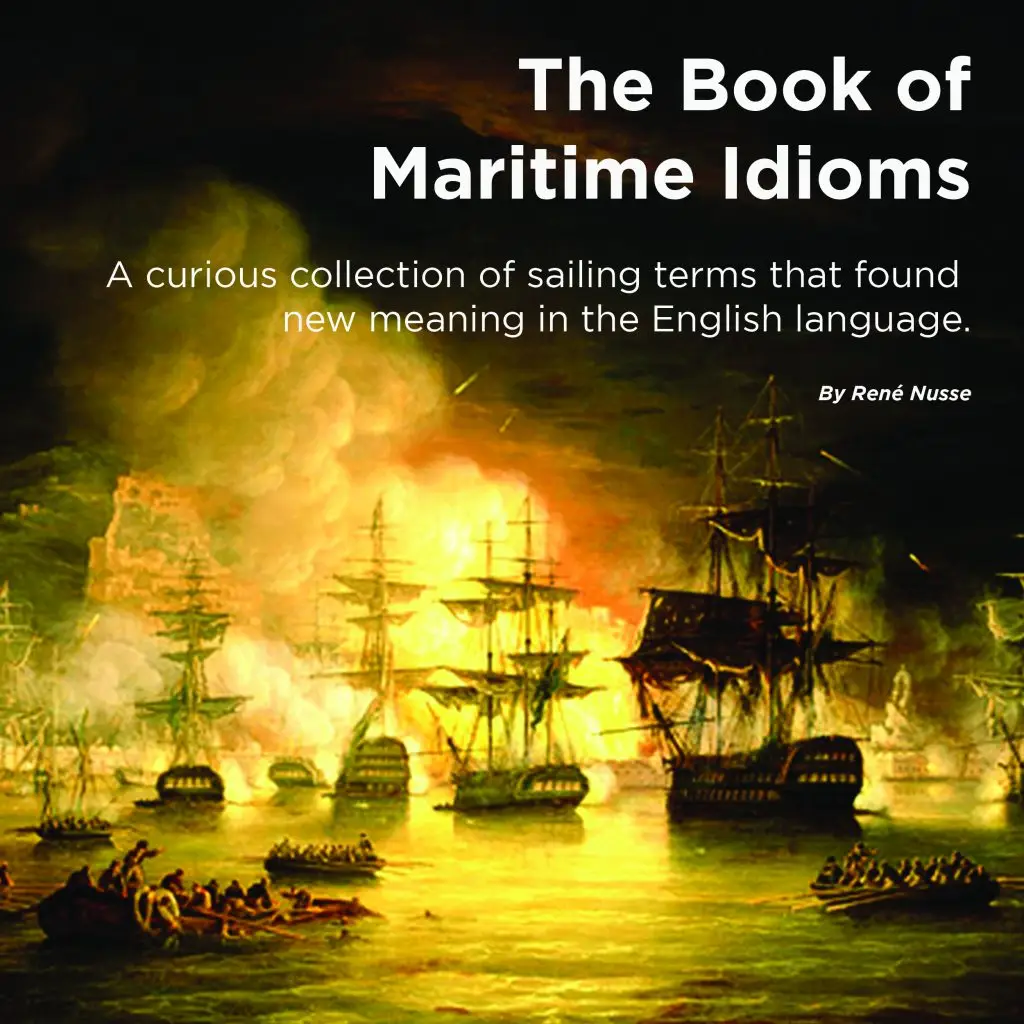Points of Sail
Points of Sail refer to the different directions a sailboat can travel in relation to the wind. Understanding these helps you optimise your boat’s speed and efficiency based on the wind’s angle. Here’s a breakdown of the common points of sail:

1. Into the Wind (No-Sail Zone or “In Irons“)
- Angle: 0° to 30° from the wind
- Description: A sailboat cannot sail directly into the wind. This area is referred to as the “no-sail zone.” The sails will luff (flap) if you try to sail in this direction, and the boat will lose speed and eventually stall or even drift backwards.
2. Close-Hauled (Beating)
- Angle: 30° to 45° from the wind
- Description: This is the point of sail closest to the wind. The sails are pulled in tight (trimmed in), and the boat sails at a sharp angle to the wind. Sailing close-hauled is efficient, but the boat must tack (zigzag) to make headway upwind.
- Speed: Fast but demanding on sail trim and balance.
- Note: Sheets are all in, and the helmsman steers the boat using the tell-tales.
3. Close Reach
- Angle: 45° to 60° from the wind
- Description: The boat is angled a little further off the wind than close-hauled, with sails still relatively tight. It’s a fast and powerful point of sail, often used for covering distances efficiently.
- Note: The sheets are not all the way. The helmsman steers a specific course while the trimmers set the sails using the tell-tales.
4. Beam Reach
- Angle: 90° (wind coming from directly across the side, or “beam”)
- Description: The boat sails with the wind coming directly from the side. This is typically one of the fastest and easiest points of sail because the sails are neither too tight nor too loose.
- Speed: Typically the fastest point of sail.
5. Broad Reach
- Angle: 120° to 160° from the wind
- Description: The boat is angled with the wind behind the beam, and the sails are let out. This is a stable point of sail often used for long downwind journeys, though it can create significant heeling (tilt).
- Speed: Fast but can be challenging in stronger winds.
6. Running (Downwind)
- Angle: 160° to 180° from the wind
- Description: The wind is directly behind the boat, and the sails are fully released. Sailing downwind is slower than a beam or broad reach because the wind doesn’t generate as much lift on the sails—it’s mostly pushing the boat forward.
- Speed: Stable but slower than other points due to less lift.
- Note: Sometimes also referred to as the “Danger Zone” because of the possibility of an accidental gybe.
Summary of Points of Sail:
- No-Sail Zone: Directly into the wind (0° to 30°) – Boat cannot sail.
- Close-Hauled: 30° to 45° – Sailing as close to the wind as possible.
- Close Reach: 45° to 60° – Slightly off the wind, fast and efficient.
- Beam Reach: 90° – Wind directly from the side, typically the fastest.
- Broad Reach: 120° to 160° – Wind behind the beam, good for downwind travel.
- Running: 160° to 180° – Directly downwind, sails fully out.
Knowing the points of sail allows you to adjust sail trim and course, ensuring they can navigate efficiently based on wind direction.

NAVIGATION RULES CLINIC + BASIC SAIL TRIM COURSE
These FREE online sailing lessons are a great refresher courses for EVERYONE.
Take these FREE courses now and check out how simple and easy it is to take a NauticEd online sailing course.Estimated time: 20 minutes each.
Author
-

Rene is a keelboat instructor and sailing coach in the Mandurah area WA. He is also the author of several books about sailing including "The Book of Maritime Idioms" and "Renaming your boat".
View all posts


